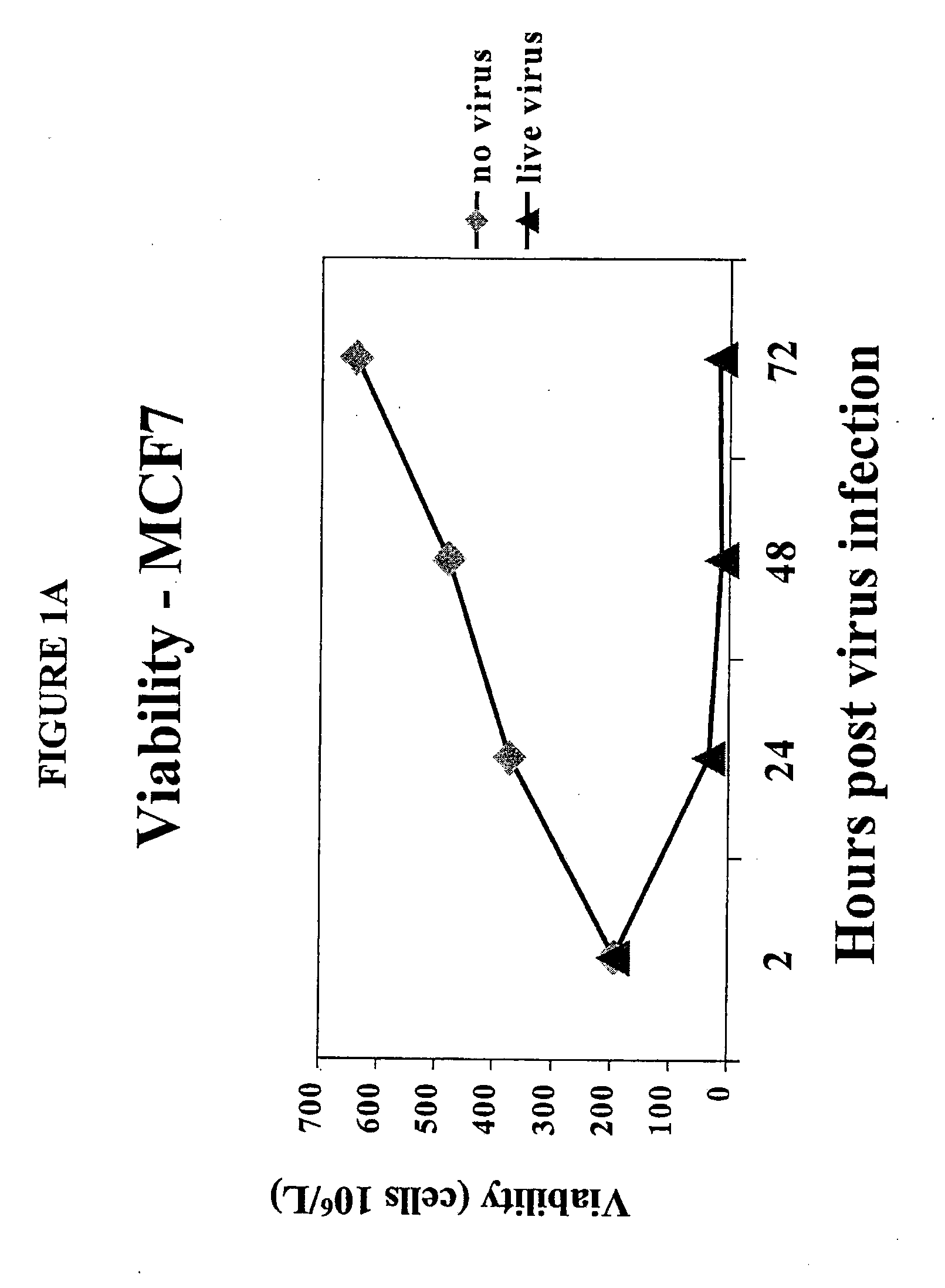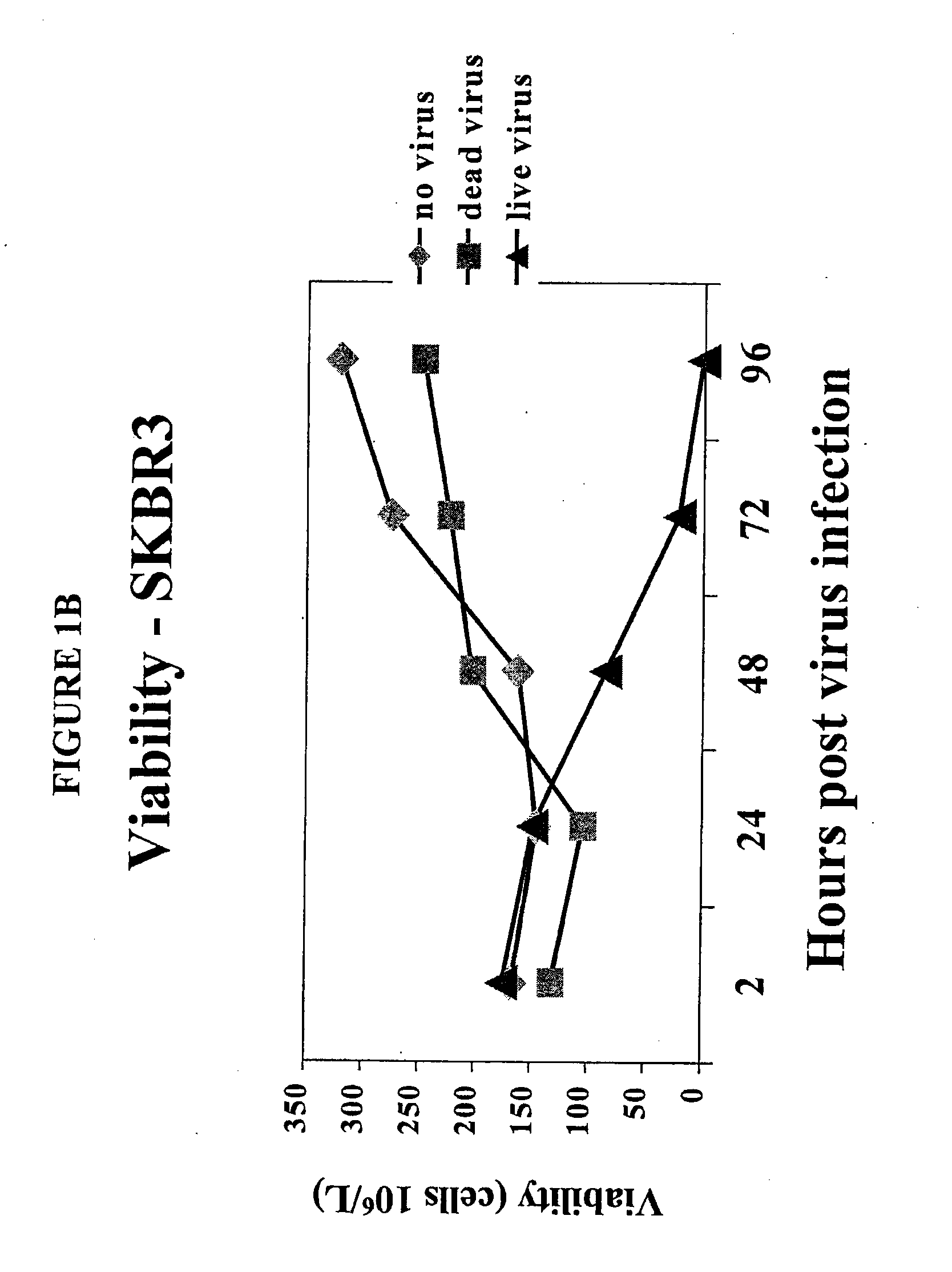Virus clearance of neoplastic cells from mixed cellular compositions
a technology of neoplastic cells and viruses, which is applied in the direction of dsrna viruses, drug compositions, tumor/cancer cells, etc., can solve the problems of cancer reappearing shortly after chemotherapy termination, cancer cells contaminated with cancer cells, and doses which are harmful to cancer cells are often harmful to hematopoietic stern cells
- Summary
- Abstract
- Description
- Claims
- Application Information
AI Technical Summary
Benefits of technology
Problems solved by technology
Method used
Image
Examples
example 1
Reovirus Induced Oncolysis and Apoptosis in Breast Cancer Cells
[0140] To determine the effect of reovirus on the viability of neoplastic cells, we first used three breast cancer model systems, MCF7 (ATCC number HTB-22), SKBR3 (ATCC number HTB-30) and MDA MB 468 (ATCC number HTB 132). Cells of each cell line were grown to 50-60% confluency and infected with reovirus serotype 3, strain Dearing, at a multiplicity of infection of 40. Reovirus was obtained and maintained as described in U.S. Pat. No. 6,136,307. Reovirus infected and non-infected cells were harvested at 0, 24, 48 and 72 hours after infection and the viability was determined.
[0141] The results are shown in FIGS. 1A-1D. Viable cell count in reovirus-infected MCF7 (FIG. 1A), SKBR3 (FIG. 1B) or MDA MB 468 cells (FIG. 1C) dropped significantly after the infection, while the cells infected with dead virus or no virus proliferated as expected. Reovirus treatment caused MCF7 (FIG. 1D) and SKBR3 viability to drop from 93% to 16% ...
example 4
Reovirus Selectively Removed Cancer Cells from a Mixed Cellular Composition
[0146] Neoplastic cells were mixed with apheresis product and subjected to reovirus infection to investigate if reovirus can selectively remove neoplastic cells from the mixed cellular composition. Apheresis product was prepared according to a procedure previously described (Stewart et al., 1999; Duggan et al., 2000). When admixtures of apheresis product (90%) and MCF7 (10%) were treated with reovirus and tested daily for cell count and viability, there was a 100-fold depletion in the numbers of cytokeratin-positive MCF7 cells while the CD34+ stem cells remained intact and viable. FIGS. 4A-4C show the purging effect of reovirus to mixtures of apheresis product with MCF7, SKBR3 or MDA MB 468 cells. These results demonstrate that reovirus can selectively kill neoplastic cells in a cell mixture and leave the stem cells intact.
PUM
| Property | Measurement | Unit |
|---|---|---|
| cellular composition | aaaaa | aaaaa |
| freezing | aaaaa | aaaaa |
| affinity | aaaaa | aaaaa |
Abstract
Description
Claims
Application Information
 Login to View More
Login to View More - R&D
- Intellectual Property
- Life Sciences
- Materials
- Tech Scout
- Unparalleled Data Quality
- Higher Quality Content
- 60% Fewer Hallucinations
Browse by: Latest US Patents, China's latest patents, Technical Efficacy Thesaurus, Application Domain, Technology Topic, Popular Technical Reports.
© 2025 PatSnap. All rights reserved.Legal|Privacy policy|Modern Slavery Act Transparency Statement|Sitemap|About US| Contact US: help@patsnap.com



